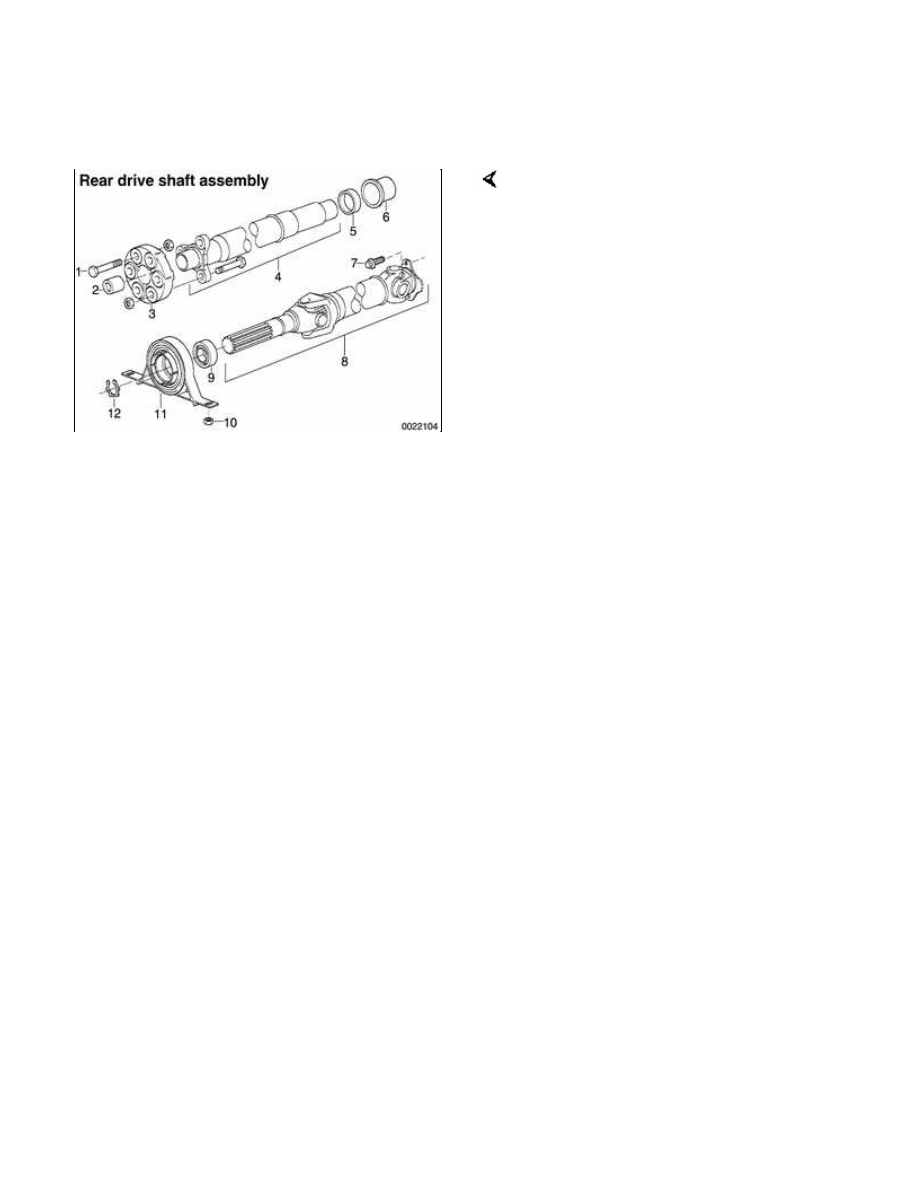BMW 3 (E46). Manual - part 115

260-2
Rear Driveshaft Service
Repair kits for the universal joints are
not available for BMW driveshafts.
Worn or damaged universal joints
usually require replacement of the
driveshaft.
1 - Hex bolt, M12
2 - Centering sleeve
3 - Flexible disk
4 - Front section of driveshaft
5 - Clamping sleeve
6 - Clamping ring
7 - Torx screw
8 - Rear section of drive shaft
9 - Center bearing
10 - Nut
11 - Center bearing support
12 - Lock ring
The driveshaft is balanced to close
tolerances. Whenever it is to be
removed or disassembled, the
mounting flanges and driveshaft
sections should be marked with paint
or a punch before proceeding with
work. This will ensure that the
driveshaft can be reassembled or
installed in exactly the original
orientation.
Rear driveshaft, aligning
The alignment of the driveshaft does
not normally need to be checked
unless the engine/transmission or the